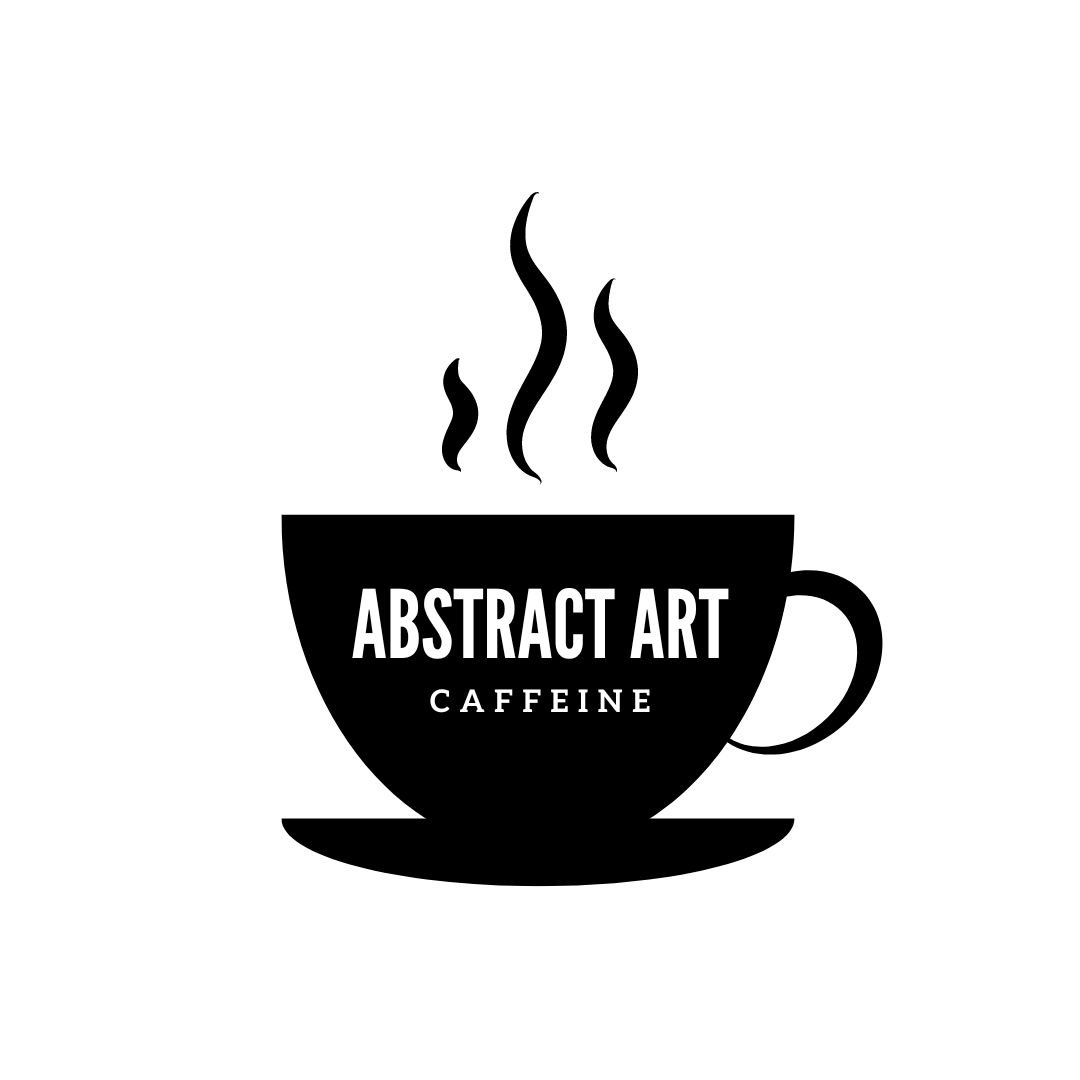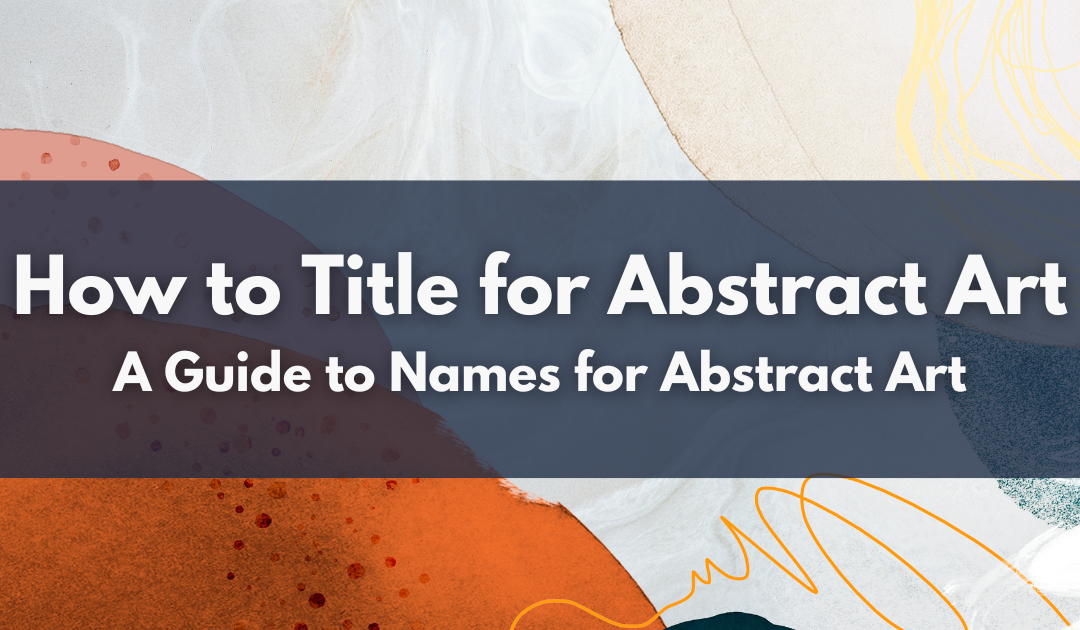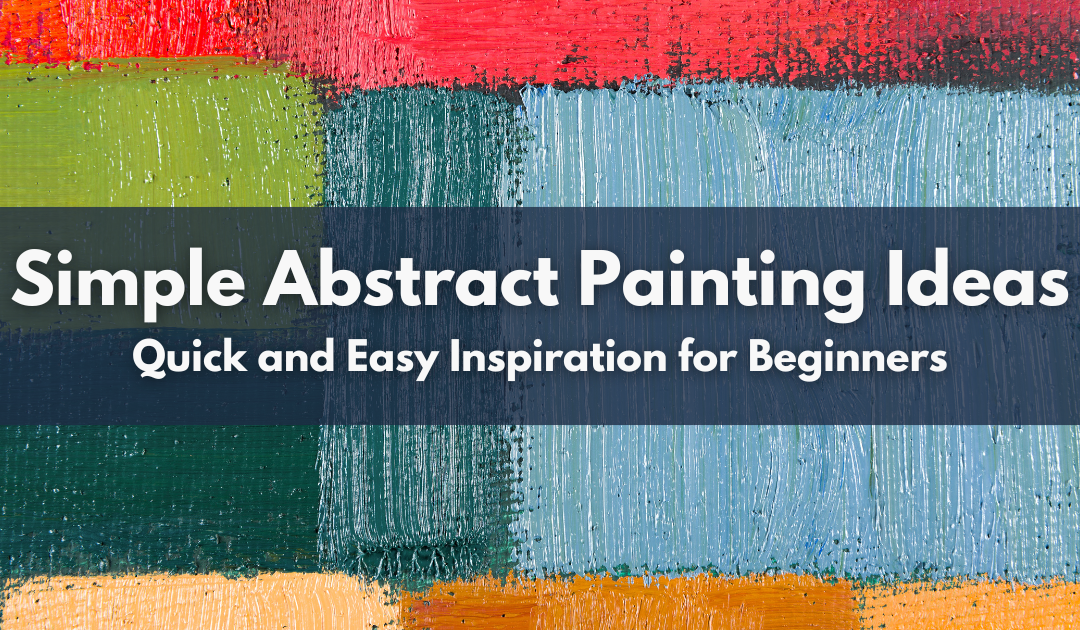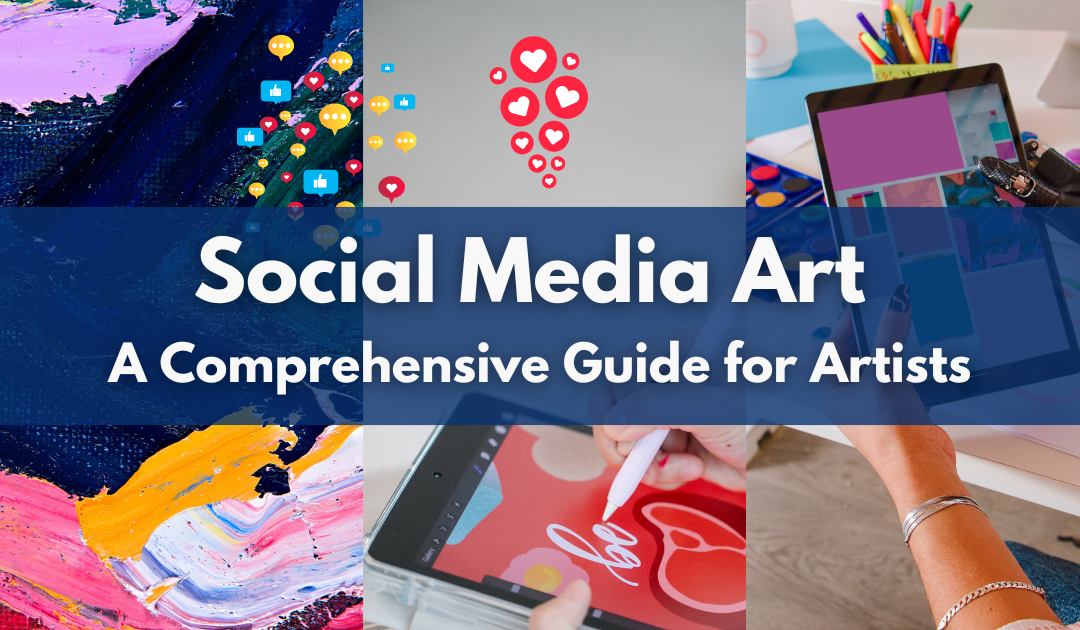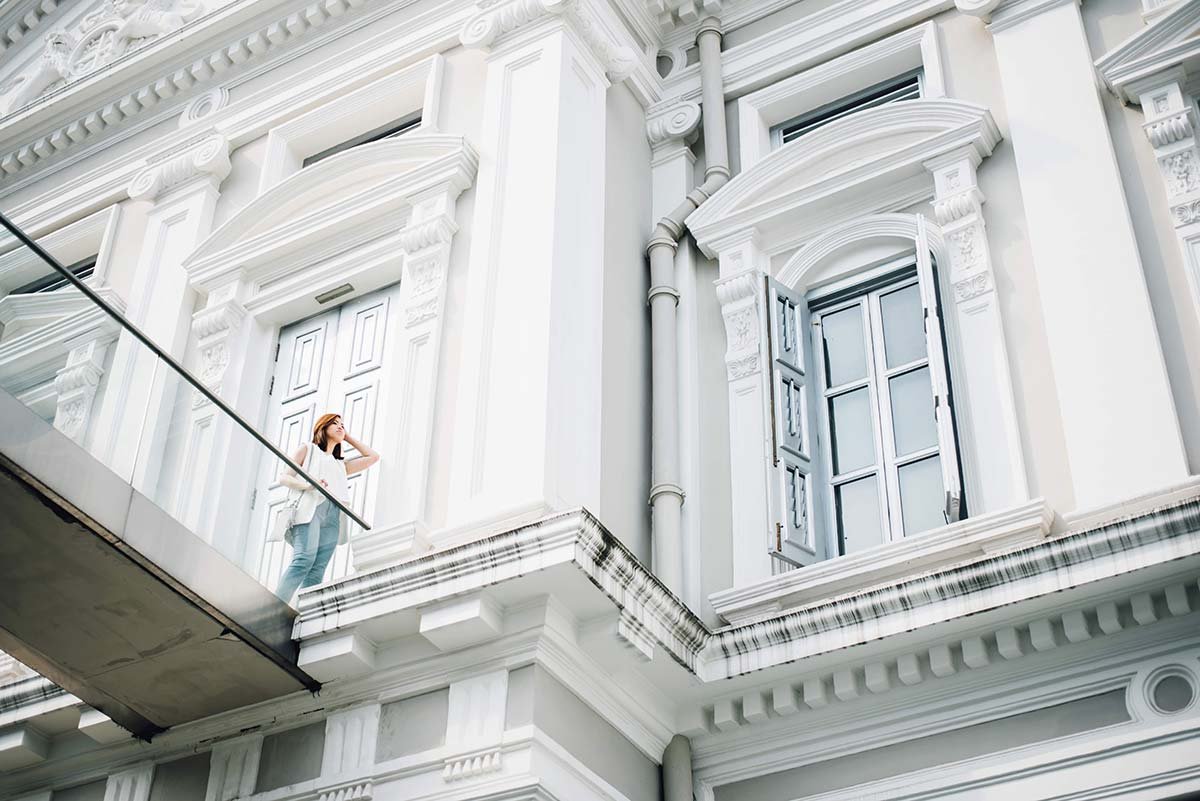Abstract painting ideas for beginners can open up a whole new world of creativity. If you’ve ever wanted to try art but felt unsure where to start, abstract painting might be the perfect solution.
It’s a fun and free way to express yourself without worrying about making things look “real.”
In this article, we’ll explore many easy abstract painting ideas and simple techniques to help you get started.
Whether you’re a total newbie or have dabbled in art, you’ll find plenty of inspiration and practical tips to unleash your inner artist.
Let’s dive into the colorful world of abstract art!
What is Abstract Painting?

Abstract painting is a style of art that doesn’t try to show things as they look in real life. Instead, it uses colors, shapes, and textures to express feelings or ideas.
Think of it as painting your emotions or thoughts rather than making a painting of a landscape or a person.
The great thing about abstract art is that there’s no “right” or “wrong” way to do it. It’s all about exploring and having fun with paint. This makes it perfect for beginners who might feel nervous about their artistic skills.
Why Abstract Painting is Great for Beginners
Abstract painting ideas for beginners are fantastic for several reasons:
- No pressure to make things look “realistic”
- Freedom to experiment with colors and techniques
- Great way to express emotions and ideas
- Helps build confidence in your artistic abilities
- Can be relaxing and stress-relieving
Let us describe each point in detail so that you can understand the full essence.
If you are in a rush and want to learn abstract painting Ideas quickly, you can skip this part and scroll to the next chapter.
- No Pressure to Make Things Look “Realistic”
One of the biggest hurdles for many beginner artists is the fear of not being able to make their art look “real.” With abstract painting, that pressure disappears completely. You’re not trying to create a perfect representation of a person, landscape, or object. Instead, you’re free to focus on colors, shapes, and textures. This takes away a lot of the stress and allows you to enjoy the process of painting without worrying about whether your tree looks exactly like a tree or if your portrait captures every detail of a person’s face. - Freedom to Experiment with Colors and Techniques
Abstract art is all about exploration and experimentation. You can try out different color combinations without worrying if they’re “correct. “Want to paint a purple sun in a green sky? Go for it! You can also play around with various painting techniques – splattering, dripping, using palette knives, or even painting with your fingers. This freedom allows you to discover what you enjoy most and helps you develop your unique style.
- Great Way to Express Emotions and Ideas
Abstract painting provides a powerful outlet for expressing your feelings and thoughts. Sometimes, emotions are hard to put into words, but you can easily convey them through color, shape, and texture in an abstract painting. Feeling happy? Use bright, vibrant colors and sweeping brush strokes. Feeling calm? Try soft, cool colors with gentle blending. This emotional connection to your art can make the painting process deeply satisfying and meaningful. - Helps Build Confidence in Your Artistic Abilities
Because there’s no “right” or “wrong” way to create abstract art, it’s an excellent confidence builder. Each painting you create is uniquely yours, and that’s something to be proud of. As you experiment and develop your skills, you’ll likely find certain techniques or styles that you particularly enjoy or excel at. This growing sense of competence can boost your confidence not just in art, but in your creative abilities overall.
- Can Be Relaxing and Stress-Relieving
The process of creating abstract art can be incredibly relaxing. As you focus on mixing colors, making marks on the canvas, and exploring different textures, you may find yourself entering a state of flow where time seems to slip away. This immersive experience can be a great way to unwind after a long day, reduce stress, and give your mind a break from every day worries. Many people find that painting abstract art is almost like a form of meditation.
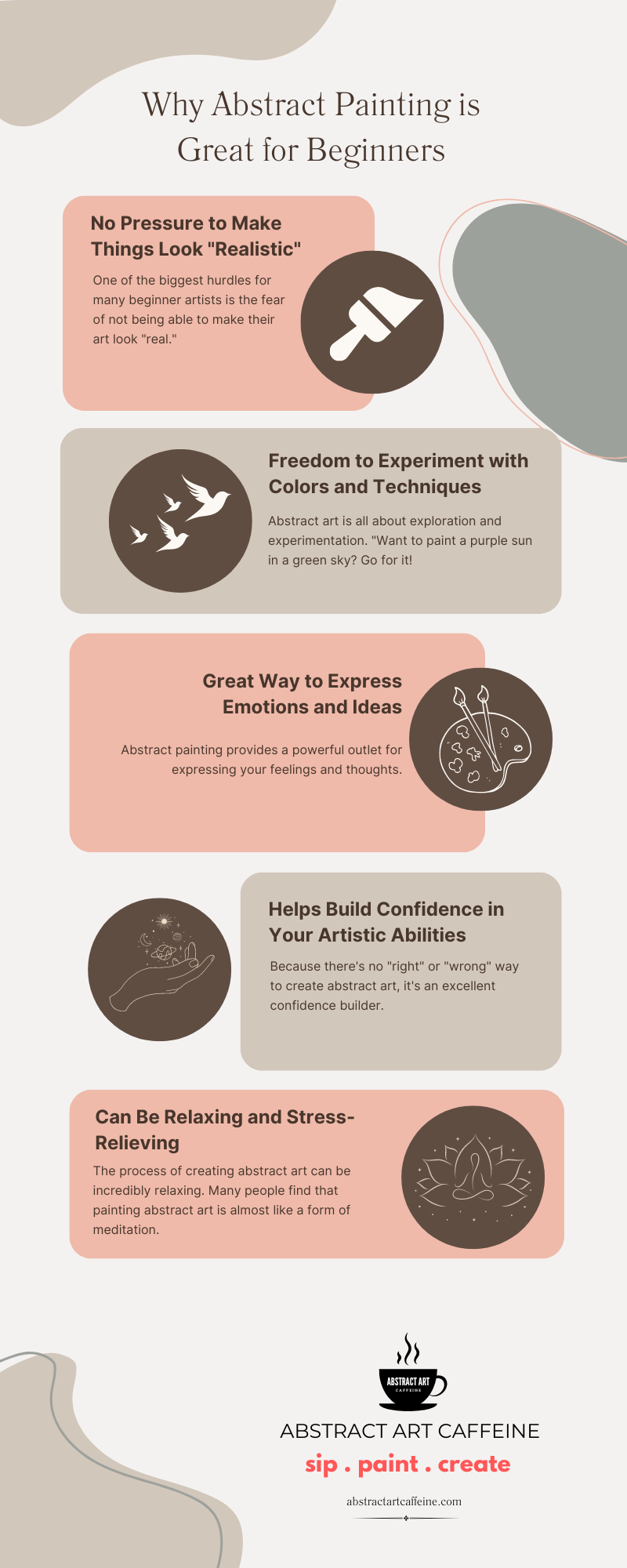
Getting Started: Essential Supplies
Before we jump into abstract art painting ideas, let’s talk about what you’ll need to get started.
Basic Paint Supplies
- Acrylic paints: These are great for beginners because they dry quickly and are easy to use.
- Brushes: Get a mix of sizes, from small detail brushes to larger ones for big areas.
- Canvas: Start with smaller canvases (8×8 inches or 12×12 inches) as you learn. Beginning with square size canvases are good for practice and easy composition.
- Palette: This is for mixing colors. If you don’t have a proper palette, you can use a plastic plate.
- Water container: For cleaning brushes and thinning paint.
- Paper towels or rags: For wiping brushes and cleaning up.
You can also create an abstract painting with oil paints and watercolors.
But, we are focusing on acrylic paints in this post because most abstract artists prefer acrylic paints for creating their artworks and it’s also beginner friendly.
Optional Tools
To create different effects in your abstract paintings, you might want to try:
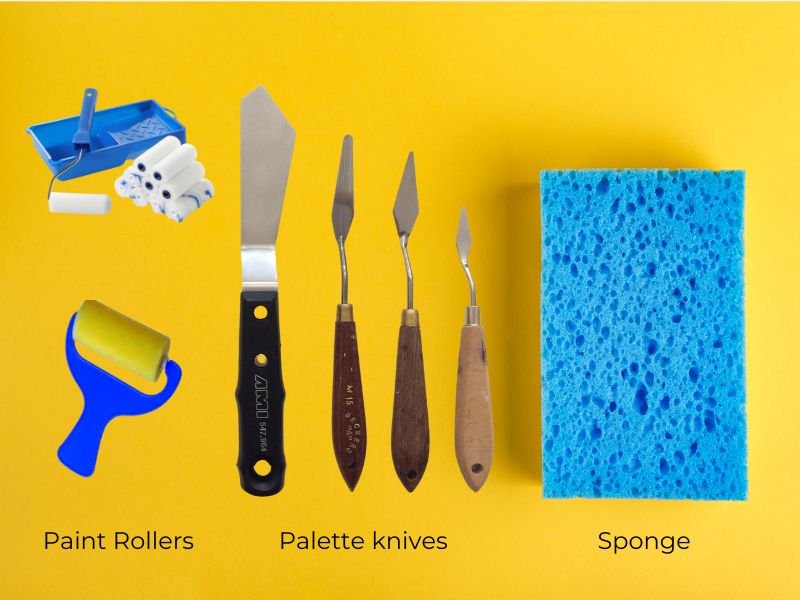
- Palette knives: Great for spreading paint and creating texture
- Sponges: For dabbing and creating interesting patterns
- Textured or foam rollers: Can add unique textures to your paintings
Setting Up Your Workspace
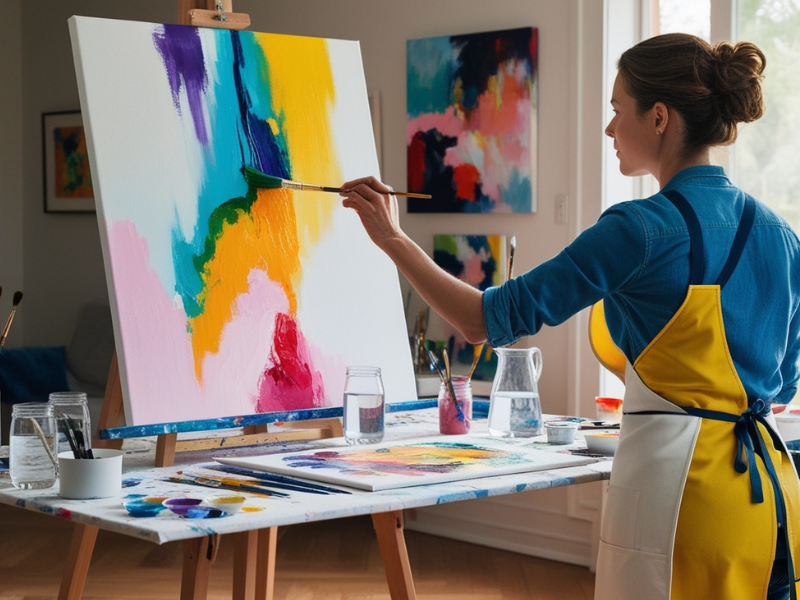
A well-organized workspace will make your painting process more enjoyable:
- Easel or Flat Surface: An easel allows you to work comfortably, but a flat surface like a table also works.
- Protective Covering: Cover your work surface with cloth, old newspaper or a plastic cover to protect it from paint spills.
- Good Lighting: Find a spot with good lighting and enough space to spread out your supplies. Natural light is ideal, but a bright lamp can also help you see colors and details clearly.
- Water and Rags: Keep two or three containers of water for rinsing brushes and some rags or paper towels for cleaning up. Acrylic paints dry very quickly, so ensure you have easy access to water to clean your brushes.
Understanding Color Theory for Abstract Art

Image by macrovector on Freepik
Color is super important in abstract painting.
Before exploring abstract painting ideas for beginners, it is good to know a little about the basics of color theory.
Understanding a bit about color theory can help you create more interesting and balanced paintings.
Color Wheel Basics
The color wheel is a handy tool that shows how colors relate to each other. It has three main types of colors:
- Primary colors: Red, blue, and yellow
- Secondary colors: Made by mixing two primary colors (purple, green, orange)
- Tertiary colors: Made by mixing a primary and a secondary color
Complementary Colors
Complementary colors are opposite each other on the color wheel. Using them together can make your painting pop!
Some examples are:
- Red and green
- Blue and orange
- Yellow and purple
Creating Mood with Color

Colors can affect how people feel when they look at your painting. Here are some common color associations:
- Warm colors (reds, oranges, yellows): Energetic, happy, exciting
- Cool colors (blues, greens, purples): Calm, peaceful, mysterious
- Bright colors (hot pink, fluorescent orange, lime green): Cheerful, bold
- Muted or Neutral colors (Black, white, gray, and brown): Subtle, sophisticated
Experiment with different color combinations to see what feelings or moods you can create in your abstract paintings.
Basic Abstract Painting Techniques
Now, let’s explore some easy abstract painting techniques you can try:
Gestural Brushstrokes
This technique is all about making bold, expressive brush marks. Hold your brush loosely and move your whole arm as you paint. Don’t worry about being precise – the goal is to capture energy and movement.
Layering and Blending
Start with a base layer of paint, then add more layers on top. You can blend colors together while they’re still wet or let each layer dry for a different effect. This technique can create depth and interest in your painting.
Splattering and Dripping
For a fun, Jackson Pollock-inspired look, try splattering or dripping paint onto your canvas. You can flick paint from a brush or thin your paint with water and use a dropper to create drips.
Scraping and Texturing
Use a palette knife or an old credit card to scrape through wet paint, creating interesting textures and patterns. You can also press textured objects (like bubble wrap or a comb) into wet paint to make unique marks.
10 Abstract Painting Ideas for Beginners
Ready to start painting? Here are 10 easy abstract painting ideas to inspire you:
1. Geometric Shapes Composition
Create a painting using only geometric shapes like circles, squares, and triangles.
Overlap them, vary their sizes, and use different colors to create an exciting composition.
2. Emotional Color Field
Choose colors that represent a specific emotion (like blues and greens for calm or reds and oranges for excitement).
Paint large areas of color that blend into each other.
3. Nature-Inspired Abstract Landscape
Think of a landscape (like a beach or forest) and simplify it into basic shapes and colors.
Don’t worry about details – focus on capturing the essence of the scene.
4. Abstract Self-Portrait
Instead of trying to paint a realistic self-portrait, use colors and shapes to represent different aspects of yourself.
What color is your personality? What shape represents your dreams?
5. Music-Inspired Painting
Listen to your favorite song and paint what you “see” in your mind as you listen.
Use colors, shapes, and brushstrokes to represent the rhythm and mood of the music.
6. Textured Monochrome
Create a painting using only one color (plus white and black to make different shades).
Focus on creating lots of texture using different tools and techniques.
7. Abstract Still Life
Arrange some objects on a table, then paint an abstract version of what you see.
Simplify the shapes and experiment with non-realistic colors.
8. Minimalist Line Art
Create a painting using only lines.
Vary the thickness, direction, and color of the lines to create an exciting composition.
You can color lines, or you can also create your painting with just only one monochromatic color.
9. Abstract Word or Letter Painting
Choose a word or letter that’s meaningful to you.
Paint it in an abstract way, playing with the shape and adding colors and textures around it.
10. Mixed Media Collage Painting
Combine painting with collage techniques.
Cut out shapes from magazines or colored paper, glue them to your canvas, and then paint over and around them.
Step-by-Step Guide: Creating Your First Abstract Painting
Now that we’ve explored some abstract painting ideas for beginners let’s walk through the process of creating your first abstract painting.
Choosing Your Concept
First, decide what you want your painting to be about.
It could be an emotion, a place, or just a color combination you like. For this example, let’s say we’re painting “Joy.”
Sketching Your Basic Composition
Lightly sketch some basic shapes on your canvas with a pencil or any mark-making tools.
For “Joy,” you might draw some large, flowing curves and a few smaller circles.
Applying Base Layers
Start with big, bold brushstrokes in bright, cheerful colors.
Don’t worry about staying in the lines of your sketch – let the paint flow freely.
For “Joy,” you might use yellows, oranges, and pinks.
Adding Details and Texture
Once your base layer is dry, add more elements.
For “Joy,” you could splatter some white paint for a sense of energy or use a palette knife to add some textured streaks of bright blue.
Finishing Touches
Step back and look at your painting. Add any final details or highlights that you think it needs.
For “Joy,” you might add some small dots of metallic gold paint to make it sparkle.
Remember, there’s no “right” way for your painting to look. The most important thing is that you enjoy the process and feel good about what you’ve created.
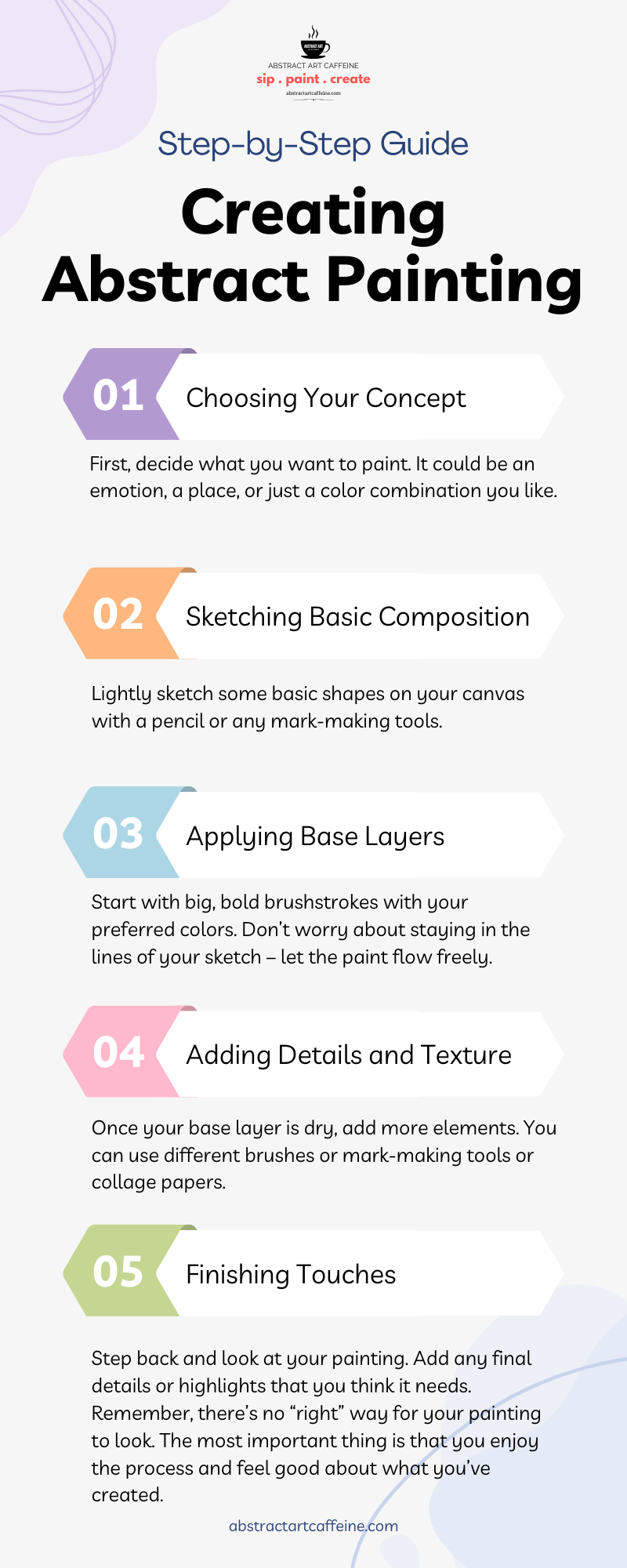
Tips for Developing Your Abstract Style
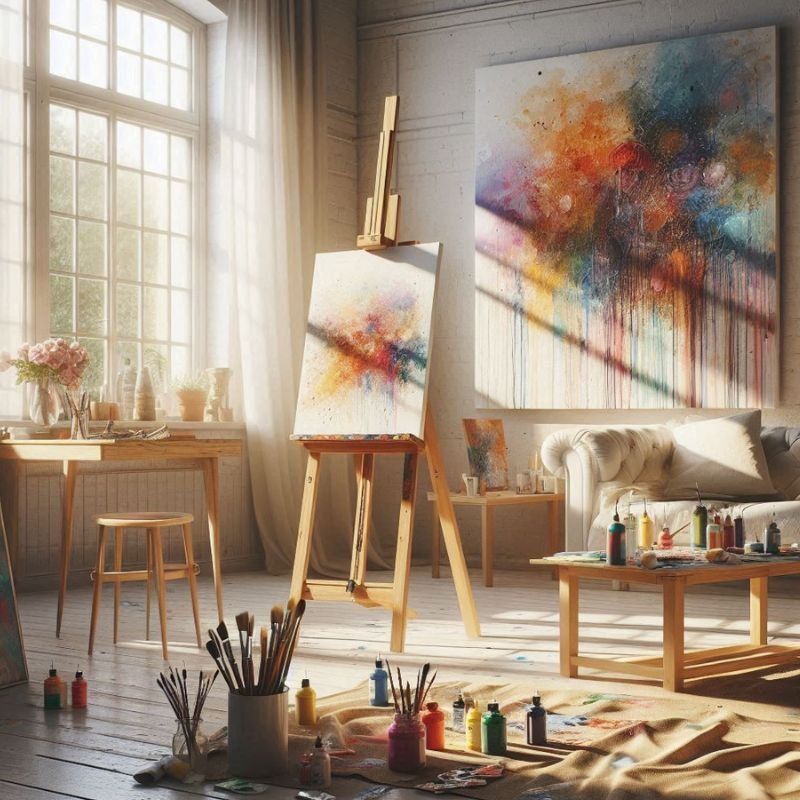
As you continue exploring abstract painting ideas, here are some tips to help you develop your own unique style:
Experimenting with Different Tools
Try painting with unusual tools like sponges, old credit cards, or even your fingers. Each tool will create different textures and effects.
Finding Inspiration in Everyday Life
Look for interesting colors, shapes, and patterns in the world around you. A colorful graffiti wall, the shapes of clouds, or the pattern on your coffee mug could all spark ideas for abstract paintings.
Keeping an Art Journal
Start a sketchbook or journal where you can jot down ideas, practice color mixing, and make small sketches. This can be a great source of inspiration when you’re ready to start a new painting.
Embracing Imperfections
Remember, abstract art doesn’t have to be perfect.
In fact, sometimes, the “mistakes” or unexpected results can lead to the most interesting parts of your painting.
Overcoming Common Challenges
Even with easy abstract painting ideas, you might face some challenges. Here’s how to handle them:
Dealing with Creative Block
If you’re feeling stuck, try:
- Looking at other artists’ work for inspiration (but don’t copy!)
- Taking a break and coming back with fresh eyes
- Starting a new painting with a completely different color palette
Knowing When to Stop
It can be hard to know when a painting is “finished.”
A good rule of thumb is to stop when you feel happy with it, or when adding more starts to take away from the overall effect.
Trust your instincts and know when your painting feels complete.
Handling Criticism and Self-Doubt
Remember, art is subjective. Not everyone will love every painting you make, and that’s okay.
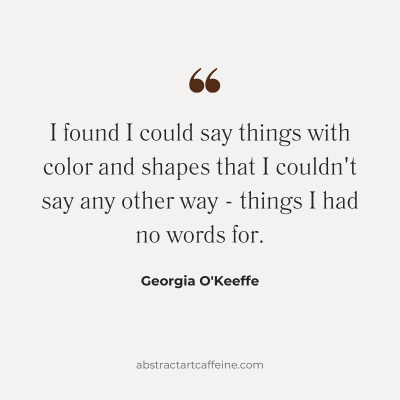
Focus on enjoying the process and expressing yourself rather than trying to please everyone.
Displaying and Sharing Your Work
Once you’ve created some abstract paintings you’re proud of, you can share them with others.
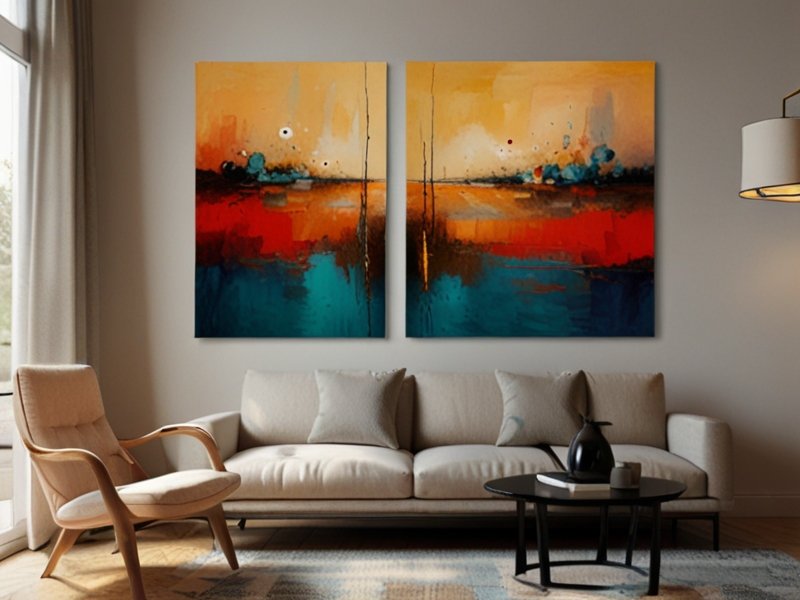
Photographing Your Paintings
Take clear, well-lit photos of your work.
Natural daylight often works best. To avoid distortion, make sure your camera or phone is parallel to the painting.
Creating an Online Portfolio
Consider setting up a free website or Instagram account to showcase your art.
This can be a great way to track your progress and connect with other artists.
Joining Art Communities
Look for local art groups or online communities where you can share your work and get feedback.
Many cities have “paint and sip” events, which can be fun ways to practice and meet other art enthusiasts.
Conclusion
Abstract painting ideas for beginners offer a wonderful gateway into the world of art.
Remember, the goal isn’t to create a masterpiece every time – it’s to express yourself, have fun, and grow as an artist.
Don’t be afraid to experiment, make mistakes, and try new things.
Every painting you create is a step forward in your artistic journey. So grab your brushes, squeeze out some paint, and let your creativity flow!
Whether you’re exploring easy abstract art painting techniques or diving into more complex abstract art ideas, the most important thing is to enjoy the process.
Your unique perspective and creativity are what makes your art special.
So go ahead, unleash your inner artist! The world of abstract painting is waiting for you to make your mark.
Happy painting!
For further reading and inspiration, check out these resources:
- “Abstract Art: A Global History” by Pepe Karmel – Check on Amazon
- The Museum of Modern Art’s guide to abstract art – Click Here
- Understanding color: A visual guide from Adobe – Click Here
- Abstract art ideas on Pinterest – View Here


